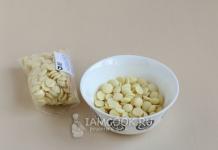Good expensive wine does not tolerate neglect. The pleasure you get from drinking a drink depends on a number of factors. These include choosing the right glasses, the temperature at which the drug is served, and the method of consumption. To comply with all the subtleties of etiquette, you need to study valuable information from experienced sommeliers and gourmets.
The benefits of wine for the body
So, wine has the following valuable qualities:
- maintains stomach acidity at an optimal level;
- removes bad cholesterol, leaving good;
- normalizes blood sugar levels (important for people with diabetes);
- awakens appetite;
- has a bactericidal effect on the immune system;
- removes poisons and toxins from the intestinal walls;
- helps eliminate insomnia;
- improves mood and relieves the effects of stress;
- fights anemia, replenishing the lack of iron in the body;
- eliminates blockage of blood vessels, increases blood circulation;
- improves metabolism;
- tidies up the functioning of the digestive tract;
- replenishes the lack of vitamin B and amino acids;
- has a tonic effect on the human body as a whole.
How to choose wine
- Each person determines for himself which wine to give preference to. Some people like red varieties, others like white ones. As a rule, wine purchases should be made taking into account the available snacks.
- Experienced gourmets unanimously insist that it is necessary to refuse to purchase semi-dry or semi-sweet wine. These types are made from low quality raw materials. They often add flavor enhancers, preservatives, and dyes. Choose a sweet or dry wine that is not labeled “semi-.”
- Pay attention to the name of the manufacturer. A conscientious manufacturer will print the name in large, easily readable letters. You should also study the year of harvest of the raw materials from which the wine was produced. If the harvest date is not indicated, you have low-quality powder wine.
- In addition to the name, the grape varieties on the basis of which the drug is prepared must be indicated. If you have an elite (expensive) series wine in your hands, only 1 variety may be indicated.
- It is preferable to choose wine in a darkened glass bottle or wooden barrel. You should not buy packaged drinks; they do not retain the valuable substances in the wine well. As for the lid, it can be made of pressed wood sawdust or plastic.
How to store wine
- After purchasing, choose a suitable place where the wine will be stored until consumed. It should be dark, cool, dry. Do not keep the composition in the refrigerator.
- The optimal temperature is considered to be between 10-14 degrees. If the temperature “jumps”, the wine will lose its benefits and flavor palette.
- Air humidity should not exceed 75%. Keep the wine away from strong-smelling foods, otherwise the aroma will pass into the bottle through the cork.
- If possible, choose a dry cellar or pantry that has shelving with slanted shelves. The bottle must be held at an angle.
You will not be able to experience the entire flavor palette of a noble drink if the wine is too cold or, on the contrary, warm.

Humanly, the receptors of the tongue sense the slightest fluctuations in the temperature of products that have been preheated to 20-40 degrees.
In the case of wine, if it is over-cooled, you will want to add sugar to the drink as the sweet notes will simply disappear from the potion.
You can easily deceive the receptors of a person tasting wine. It is enough just to have knowledge regarding the supply temperature.
Each wine composition differs in age, variety, aftertaste, and aroma. Therefore, the temperature varies significantly.
So:
- port, sherry, Madeira and other fortified varieties - 10-17 degrees;
- young red wine up to 2 years old - 12-16 degrees;
- wine that has not reached maturity - 14-16 degrees;
- great dry or red wine - 14-16 degrees;
- Pinot Noir wine - 14-17 degrees;
- Cabernet Sauvignon wine - 16-18 degrees;
- red Bordeaux wines - 16-19 degrees;
- rose wine - 11-13 degrees;
- homemade and dry white wine - 10-13 degrees;
- young red and fruity wine - 11-12 degrees;
- white or sparkling wine - 7-9 degrees;
- white dessert wine “Sauternes” - 8-12 degrees;
- white liqueur wine - 10-11 degrees;
- Riesling wine - 9-12 degrees;
- Burgundy wines (such as Chardonnay) - 8-11 degrees;
- ice wine (Icewine and others) - 11 degrees.
Features of changing the temperature of wine when serving
- Despite the temperature at which wine is served, many gourmets change the indicator taking into account weather conditions and time of consumption. If the drug is drunk as an aperitif, refrigerate it according to the recommendations above. If wine is consumed with appetizers and warm dishes, raise the level by 1 degree.
- People who want to enjoy a drink in the scorching sun should increase the temperature by 2 degrees. Otherwise, the elixir will seem icy. If we are talking about ordinary summer days, serve wine according to the recommendations above.
- When it comes to Rieslings and sparkling wines, you should only drink the wine cold. In this case, the temperature should not fall below 7 degrees.
- Professional tasters advise basing your decision on the aroma and taste of the alcoholic drink. If the wine is bright and expensive, you should partially increase the serving temperature. This way you will better feel the whole bouquet.
- Never keep a bottle of noble medicine in the freezer. It is also worth limiting the use of the refrigerator; it is better to place the vessel in a special bucket with water and ice.

- Wine glasses for drinking a healing drink must be made of completely transparent thin glass. It is known that visual perception influences the final taste of wine.
- It is worth mentioning that a correctly selected glass has a high stem, which, in fact, must be held on to while drinking. Otherwise, you will heat the contents with your own hand and increase the permissible temperature of the drink.
- Red wines are drunk from glasses with a volume of 550-1100 ml. In this case, the vessel has a long leg, as well as a voluminous bowl, tapering towards the edge. The drink is poured into half a glass.
- White wine should be drunk from glasses whose volume does not exceed 300-350 ml. The wine glass also has a long stem and a bowl that gradually widens towards the neck. The glass should be filled ¾ of the total volume.
- For sparkling wines, a tall and narrow vessel, the width of which is equally equal, is suitable. The volume of such devices does not exceed 220 ml. The wine is poured almost to the brim in 2 approaches.
How to open and pour wine correctly
- First you need to select a corkscrew with a screw through which the wine will open. Insert the tool into the cork, tighten it to ½ cork, then try to carefully remove it.
- Do not shake the contents of the container. Place the neck of the bottle against the edge of the glass, holding the vessel with the drink at a slight angle, just like a wine glass. Do not cover the bottle label from guests; hold the bottle by the bottom.
- Depending on the type of wine, the amount that goes into the glass also varies. Table white types are poured to ¾, sparkling fruitful (expensive) - 2/3, fortified drugs and champagne - to the brim, retreating 0.5-1 cm.
- Sweet wines and port should be poured in an amount of ½ of the total volume of the glass. Sherry and mature varieties - 1/3, Madeira with vermouth and still reds - 2/3.
How to drink wine correctly
- After bottling, you can start tasting. Do not pick up a glass of wine by the cup itself, otherwise the warmth of your palms will raise the set temperature of the drink. Hold the leg with two fingers (index and thumb).
- Take your time to sip the noble drink. Lightly twist the glass in your hand so that the wine touches the walls. Admire the contents of the wine glass, its hue, the “oily” drops flowing down.
- After your visual assessment, smell the wine slowly and deliberately. Try to catch all the notes of the divine bouquet. Take a small sip, inhale, swallow the contents.
- Wine does not always reveal its taste when consumed in its pure form. Sometimes you have to dilute the drink with distilled or mineral water. In this case, first pour the wine, then add water to it (3:1 ratio).
Wine can be washed down with water; it is not necessary to dilute the noble drink. As for snacks, it all depends on the type of drug.

- Red wine - shish kebab, mushrooms, meat in any form.
- White wine - fish dishes, lean veal, sea cocktails, black and red caviar, fruit plates and salads.
- Dessert wine - cheese, any desserts, sweet dishes.
- Sparkling wine - poultry, seafood, desserts, fish, cold appetizers.
- Fortified wine - spicy foods, cheeses, fish dishes, lean meats.
Wine should not be drunk with dishes seasoned with vinegar. Also not suitable are chocolate, olives, citrus fruits, nuts, truffles, and sour sauce.
Wine has a beneficial effect on human health if you follow the norm of its consumption. Women should not drink more than 1 glass per day. Men are allowed to increase the quantity to 4 glasses. If you exceed the permissible limits, you will poison the body.
Video: the intricacies of drinking wine
In the legendary book “Camo Coming” by Henryk Sienkiewicz there is a brilliant phrase: “Don’t be too persistent, remember that good wine should be drunk slowly”.Yes, wine etiquette includes rules for serving, serving temperature, glasses, accompanying dishes, and much more, but there are three main rules for drinking wine: drink good wine, in the right company and slowly. Do you remember? Now about everything else in order. How to drink wine correctly? Let's start with how to serve wine: each variety requires a certain temperature: rich red wines with high tannins, as well as dessert and liqueur wines are served at room temperature, light red wines - at a temperature of 14 to 16 degrees, light white wines - at the temperature is about 12 degrees, and the champagne should be cooled to 6-7 degrees. If the temperature of the wine is lower than recommended, the bouquet will not open, and if it is higher, the aromas will mix and evaporate too quickly. As for the glassware, wine is traditionally drunk from special glasses with a thin stem, made of thin colorless glass, then it all depends on the what wine to drink. Elongated glasses are suitable for red and dry wines, wide and open glasses - for semi-sweet ones. Wine etiquette requires champagne and sparkling wines to be drunk from narrow glasses. Glasses that taper upward are simply designed for fortified wine, and small conical glasses are designed for dessert or liqueur wine. A small, simple, but extremely reasonable rule also says: the stronger the wine, the smaller the dishes should be. By the way, if you are planning a gala reception, remember: glasses, glasses and wine glasses are placed in a row or in a semicircle in front of each plate in the order in which the drinks will be served. .jpg) While ordinary young wines can be poured into a decanter or jug, vintage wines are served in “pristine” bottles. True, a characteristic sediment forms in aged wines - how to serve wine in this case? If this sediment easily rises from the bottom, then it is better to carefully pour the wine into another bottle, and the guests will have to take the word of the information you provide about the brand and vintage year. If the sediment is dense enough, the bottle is carefully placed on the table. The process of opening a bottle deserves special attention. Experts advise uncorking white wine immediately before drinking, but red wine at least half an hour before drinking, then it will have time to saturate with oxygen. Champagne and sparkling wines, of course, are opened at the table. The glass is filled with wine no more than two-thirds (or better, from one-third to half): in this case, you can “rotate” the drink, evaluate the shade and study the aroma. Remember that wine is not water; it cannot be drunk immediately or in large sips. Take the glass in your hands and enjoy the bouquet. Take a small sip and hold it on the back of your tongue for a second so that your taste buds fully “taste” the drink.
While ordinary young wines can be poured into a decanter or jug, vintage wines are served in “pristine” bottles. True, a characteristic sediment forms in aged wines - how to serve wine in this case? If this sediment easily rises from the bottom, then it is better to carefully pour the wine into another bottle, and the guests will have to take the word of the information you provide about the brand and vintage year. If the sediment is dense enough, the bottle is carefully placed on the table. The process of opening a bottle deserves special attention. Experts advise uncorking white wine immediately before drinking, but red wine at least half an hour before drinking, then it will have time to saturate with oxygen. Champagne and sparkling wines, of course, are opened at the table. The glass is filled with wine no more than two-thirds (or better, from one-third to half): in this case, you can “rotate” the drink, evaluate the shade and study the aroma. Remember that wine is not water; it cannot be drunk immediately or in large sips. Take the glass in your hands and enjoy the bouquet. Take a small sip and hold it on the back of your tongue for a second so that your taste buds fully “taste” the drink.  What to serve with wine and what is best to drink wine with are very common questions. Let's start with when and what kind of wine to drink. This is, of course, up to you to decide, but you must remember that in the summer dry white table wines, which have a certain freshness and the ability to quench thirst, will look more appropriate on the table. In cold weather, preference is given to red and strong wines with their warming effect. What's better to drink wine with? Fortified and aromatic wines (port, Madeira, sherry, vermouth) are excellent aperitifs that are recommended to be served before meals. Dry, semi-dry and semi-sweet wines are perfect for vegetable dishes. Dry red wine is a traditional accompaniment to poultry, veal, lamb, game dishes, as well as shish kebab, pilaf and boiled pork. Dry white wines and champagne go well with fruits and cheeses. White table wine is usually served with appetizers, light meat and fish dishes. Delicate white wines without sharp acidity are ideal for seafood. Port wine, Madeira, sherry, and Marsala are combined with hot first courses. Liqueur and dessert wines, as well as sweet sparkling wines, will be an excellent addition to dessert. Of course, these are only approximate recommendations regarding what to drink wine with. But we can definitely say what you shouldn’t drink wine with: spicy, too fatty dishes, richly seasoned with spices, as well as salted and fermented foods - these are the main “enemies” of wine that will not allow you to recognize the taste and aroma of the drink. Despite the fact that dessert should be sweeter than wine, it is important not to overdo it: sweet food in combination with dry wine will make you wince: “Sour!”, and in this case it would be better to choose a young, fruity, sharp wine. Wine, cigarettes and tobacco smoke in general, dishes flavored with curry and mint, spicy culinary aromas, fatty fish and vinegar do not agree with how to drink wine correctly. Despite the fact that tones of coffee, vanilla, chocolate and cinnamon are often present in a wine bouquet, the products themselves are not the best companions for wine, with the possible exception of some fortified wines.
What to serve with wine and what is best to drink wine with are very common questions. Let's start with when and what kind of wine to drink. This is, of course, up to you to decide, but you must remember that in the summer dry white table wines, which have a certain freshness and the ability to quench thirst, will look more appropriate on the table. In cold weather, preference is given to red and strong wines with their warming effect. What's better to drink wine with? Fortified and aromatic wines (port, Madeira, sherry, vermouth) are excellent aperitifs that are recommended to be served before meals. Dry, semi-dry and semi-sweet wines are perfect for vegetable dishes. Dry red wine is a traditional accompaniment to poultry, veal, lamb, game dishes, as well as shish kebab, pilaf and boiled pork. Dry white wines and champagne go well with fruits and cheeses. White table wine is usually served with appetizers, light meat and fish dishes. Delicate white wines without sharp acidity are ideal for seafood. Port wine, Madeira, sherry, and Marsala are combined with hot first courses. Liqueur and dessert wines, as well as sweet sparkling wines, will be an excellent addition to dessert. Of course, these are only approximate recommendations regarding what to drink wine with. But we can definitely say what you shouldn’t drink wine with: spicy, too fatty dishes, richly seasoned with spices, as well as salted and fermented foods - these are the main “enemies” of wine that will not allow you to recognize the taste and aroma of the drink. Despite the fact that dessert should be sweeter than wine, it is important not to overdo it: sweet food in combination with dry wine will make you wince: “Sour!”, and in this case it would be better to choose a young, fruity, sharp wine. Wine, cigarettes and tobacco smoke in general, dishes flavored with curry and mint, spicy culinary aromas, fatty fish and vinegar do not agree with how to drink wine correctly. Despite the fact that tones of coffee, vanilla, chocolate and cinnamon are often present in a wine bouquet, the products themselves are not the best companions for wine, with the possible exception of some fortified wines.  There are practically no strict rules or restrictions on what to serve with wine. The categorical law requiring red wine to be drunk with meat, and white wine with fish, will soon become an anachronism that will be remembered with laughter. Don't be afraid to let your imagination run wild and experiment! The only thing you need to remember: the more complex the dish, the simpler the wine it requires, and vice versa: simple food matches the most delicate examples of winemaking. But the main and, perhaps, even the only criterion for what wine is drunk with is taste. The most simple, inexpensive and unaged wine can pleasantly shock you, sparkling with new colors, if you choose the right food that will form a brilliant ensemble with the wine. And the most luxurious collection wine will seem disgusting to you if it does not match the food served. There is never too much good wine, and Benjamin Disraeli said that “variety is the mother of pleasure,” so it is ideal to serve several good wines of different types to the table. In this case, you need to remember that aperitifs are served before meals (these, as we already know, are port wines, vermouths, and so on), and directly during the feast, younger and lighter wines are served first, and white wines must be served before red ones. But , returning to the beginning of our story, wine etiquette is a necessary thing, and much is determined by what kind of wine to drink, but without a cozy atmosphere, warm company and a good mood, it is impossible to get pleasure from drinking wine.
There are practically no strict rules or restrictions on what to serve with wine. The categorical law requiring red wine to be drunk with meat, and white wine with fish, will soon become an anachronism that will be remembered with laughter. Don't be afraid to let your imagination run wild and experiment! The only thing you need to remember: the more complex the dish, the simpler the wine it requires, and vice versa: simple food matches the most delicate examples of winemaking. But the main and, perhaps, even the only criterion for what wine is drunk with is taste. The most simple, inexpensive and unaged wine can pleasantly shock you, sparkling with new colors, if you choose the right food that will form a brilliant ensemble with the wine. And the most luxurious collection wine will seem disgusting to you if it does not match the food served. There is never too much good wine, and Benjamin Disraeli said that “variety is the mother of pleasure,” so it is ideal to serve several good wines of different types to the table. In this case, you need to remember that aperitifs are served before meals (these, as we already know, are port wines, vermouths, and so on), and directly during the feast, younger and lighter wines are served first, and white wines must be served before red ones. But , returning to the beginning of our story, wine etiquette is a necessary thing, and much is determined by what kind of wine to drink, but without a cozy atmosphere, warm company and a good mood, it is impossible to get pleasure from drinking wine.
Before all the serious information that follows, we immediately warn you - you can drink wine from absolutely any glassware that you like. Glasses, mugs, glasses, shot glasses, even straight from the bottle. But, since our article is about the correct use of wine, we’ll still figure it out.

For white wine It is advised to choose smaller glasses than for red, and it must be drunk chilled. So, smaller glasses allow you to:
- preserve floral aroma;
- maintain low temperature;
- express more acidity in wine;
- release more flavors (even at low temperatures) thanks to its proximity to the nose.

Famous sommeliers have established that to achieve the most pleasant red wine Can. It is correct to drink wine from long-stemmed glasses with a wide neck (due to the characteristic bitterness and spiciness in the taste of the drink). It is also best served at room temperature. These conditions provide:
- sensation of numerous combinations of red wine aromas;
- rapid evaporation of ethanol (for example, due to a wide surface);
- softer and more balanced taste.
If you drink wine not at home, but, for example, in a restaurant or with guests, there are several techniques with which you can evaluate the quality and freshness of the wine.

1. Pay attention to the color and taste of the wine. Oxidized drinks lose their brightness in every sense. Moreover, the deep ones turn a tan color and take on a strange taste of vinegar and baked apples.
2. Storing wine at the wrong temperature. It can give it a sweet aroma and a nutty taste with a burnt sugar aftertaste. In addition, high temperatures often break the seal of the bottle (heated air pushes the cork out), so the wine can also oxidize. That is why, before learning how to drink wine correctly, you need to know the conditions for its storage.
3. The wine may be spoiled even before opening. The reason for this may be chemical contamination of the cork during production. In this case, the wine will smell very unpleasant (the smell is similar to wet or moldy paper/cardboard), and the taste will have almost no fruity notes and will taste damp.

The most important thing is the actual “acquaintance” with wine. In other words, when you bring the glass and take the first sips, it is important to look and feel the drink. How to do it?
1. Look at the wine.
Evaluate its color, density and viscosity. If you look closely, you can determine the age, strength and variety of grapes. Unless, of course, you plan to become a real sommelier or teach someone how to drink wine correctly. No? Then you can move on to the next points.

2. Inhale the wine.
From the first notes you can smell fruits, herbs or flowers. In addition, secondary aromas depend on winemaking methods. So, the most common smells are cheese crust, nut shells (almonds, peanuts) or stale beer. They are typical mainly for white wines. And at the end you can smell the aroma of roasted nuts, gingerbread, vanilla, tobacco, cedar and even autumn leaves.
3. Next comes a sip.
Wine can taste sour, sweet, bitter and sometimes salty. All wines will be slightly sour because all grape varieties contain acid. Some varieties are distinguished by their bitterness (for example, Pinot Grigio), which imparts a light, pleasant aroma of tonic. By the way, white table wines sometimes retain grape flavor, and this adds natural sweetness to the drink. Very rare wines have a salty taste; there are both red and white ones. The taste of wine stays with you for some time even after you swallow it.

4. You can “talk” to wine.
For example, consider whether the flavor was balanced (or too sour, too alcoholic, too tannic). Did you like the wine, did you remember its taste? And also have you ever tried a similar wine, would you like to repeat it, etc. The conversation can be long.
In fact, the guarantor of a balanced and pleasant taste of the drink when consumed with food is their competent tandem. Here are a few rules on how to drink wine and combine it with food:

- The wine must be more sour or sweeter than the food.
- Red wines go best with fatty meats (e.g. beef, red fish).
- White wines go better with light meats (such as white fish or poultry).
- Sparkling, white and rose wines are best paired with foods that contrast in taste and aroma.
- It is more profitable to combine red wines with products of similar taste, thereby enhancing the taste properties of the pair.
If you suddenly have unfinished bottles of wine, how can you store it after opening and is it possible at all? Can. But it all depends on the type and age of the wine.
In ancient times, wine was considered a delicacy of the gods; there were strict rules for consumption that turned into real rituals. Today, many people who drink wine do not know how to drink it correctly and with what.
A properly selected snack can bring out the best qualities of the drink.
It’s hard to imagine a feast without the ladies’ favorite drink – wine; it’s what immerses us in fragrant flower fields, vineyards and saturates an ordinary day with sunshine.
Correctly selected glasses
It is better to choose glasses for this drink without decorations. The laconism of the vessel is able to convey the beauty of the contents.
Important! Rich wines are poured into large glasses, and light wines into smaller glasses.
This is due to the fact that white wine should not be heated before drinking, but red wine, on the contrary, loves the warmth of the hands; exposure to temperature increases the flow of oxygen, which improves the aroma. Also, the stronger the drink, the smaller the glass size you choose.

Temperature
Red The wine is poured to no more than 2/3 of the glass, serving temperature is room temperature, heating is permissible to reveal the aroma and taste.
White wine usually takes up 3/4 of a glass, the temperature of such a drink is 7 degrees.
Dessert, Madeira and sherry– served at room temperature.

Rules for drinking all wines:
- First you need to enjoy the color of the drink by holding the glass up to the light.
- Next, inhale the aroma of the drink; it should have pronounced grape notes.
- Sip just a little, wetting only the end of your tongue.
- Take a small sip, letting oxygen into your mouth (opening it slightly).
- Food paired with a drink should not leave an aftertaste or interrupt its taste.
- It's best not to serve multiple white or red varieties in one meal.
- Correctly combine complex and simple tastes. This is how the taste of a simple wine is complemented by a complex dish and vice versa.
Important! If there are different types of drink, drink white first, then red. Young wines are also drunk earlier, and aged wines are drunk later. Dry ones are served first, and then sweet ones.
In order to prevent mixing of tastes and aromas, different varieties must be poured into clean glasses. Under no circumstances should wine be consumed in one gulp; it is drunk slowly and held in the mouth for 2-3 seconds in order to feel the opening bouquet.
Watch a video in which a professional sommelier explains how to drink wine correctly:
Red
Red wine is a light alcoholic drink made from red grapes. There are about 4,500 species in total. This is not only a pleasant, but also a useful product; experts have identified a positive effect on the quality of blood and heart muscle.
Semi-sweet
Semi-sweet wines are universal; they are most often consumed not only for quick snacks, but also for full meals and long feasts.
Suitable snacks:
- An ideal complement to semi-sweet red wine would be seafood, especially crayfish, oysters, lobsters, and crabs. The taste will improve not only of the drink, but also of the seafood itself.
- Also a good addition are vegetable salads containing peas and cauliflower.
- It will be especially wonderful when consumed with high-quality chocolate (both dark and milk), with varieties of mild cheese, as well as ice cream. And to enrich the taste of the drink, a well-soaked chocolate cake is additionally served.
- The semi-sweet red is complemented by bananas, juicy ripe pears and ripe strawberries.
- When choosing a hot dish, give preference to those that contain dietary meat - rabbit, partridge or chicken.
- Dishes of Spanish and Italian cuisine will ideally complement this type of drink.
Dry
Not everyone likes this type of drink. The inherent astringency and acidity are the main reasons for its unpopularity.

However, by choosing the right snack, you can play it out in an interesting way:
- Main appetizer – meat which will absorb excess acid. It is best to give preference to ham, smoked sausages, smoked lard, bacon, and chicken roll.
- An interesting addition would be sweet fruits: nectarines, mangoes, peaches; and berries: plum, strawberry. Some argue that fruit play is both spectacular and controversial. Not everyone will like the combination.
- When choosing cheese, opt for mature and sweet ones. You can prepare an appetizer of olives and cheese on skewers.
- Dry wine is complemented by pizza and spaghetti, as well as tartlets.
Reference! A spicy and spicy dish will best highlight the wine aftertaste and aroma.
The video explains which snacks go well with red wine:
Semi-dry
Almost all dishes are suitable for this type of wine.
The best are:
- For semi-dry cheese, it is especially interesting to add mold to the cheese, which will reveal many notes in the bouquet.
- Salad with seaweed and mayonnaise.
- Fatty types of sea fish.
- Meat snacks will complement the drink and make its taste richer.
- Berry and fruit salads are an excellent option for increasing the sweetness of wine.
Sweet
There are two opinions: some believe that sweet wine does not require any addition and is independent, others argue that such an alcoholic drink is better to eat with food rich in protein and saturated fat.

Adhering to the second point of view, Let's look at possible snack options:
- Red fish will perfectly complement the drink, especially tuna and salmon.
- A wonderful addition is dishes with mushrooms and cauliflower.
- A variety of desserts go well: cookies, ice cream.
- If you choose fruits, choose those that have a hint of sourness - kiwi, orange.
- Sweet red wine goes well with a variety of meats, from cold cuts to steaks.
Dessert
Dessert wines - wines containing from 12% to 17% alcohol in their composition are fortified. Very aromatic and sweet, so they are often called liqueur.

They drink them from Madeira glasses. The most popular type is Cahors.
Combinations:
- Served with fruit or sweets: cakes and sweets, puddings.
- The main addition is fresh crusty bread.
White
White wine is an alcoholic drink that has a mild taste and is made from white grapes. It has yellowish, greenish, creamy shades.

The drink has bacteriological benefits, fighting viruses and bacteria during the cold season.
Semi-sweet
- The ideal complement is fish dishes: baked, fried, stewed
- When choosing meat, it is better to give preference to white chicken, veal, and game.
- The wine taste will be complemented by a delicate pate, as well as seafood - shrimp, mussels, squid.
- Among hot dishes, the best option is julienne.
- Young, mild cheese is suitable.
Important! Snacks for a semi-sweet drink should not have a strong flavor. Otherwise, it will interrupt the taste of the wine.
Dry
Best snacks:
- Seafood: red and black caviar, crayfish, lobster, oysters, mussels, octopus.
- Steamed dishes - fish, poultry, liver. Such a light addition will not interrupt the aroma and taste.
- Sweet fruits are suitable - peaches, pears, as well as ice cream without additives.

Semi-dry
- An incredible combination will be with rolls and sushi.
- The taste of wine will be enhanced by baked goose and duck, as well as foie gras.
- Butter cakes are an interesting addition.
- Sausages will highlight the best notes of the drink.
Sweet
- Suitable for desserts: pastries, cakes.
- Pairs with crackers and mild cheeses.
Attention! Sweet wine should be served very cold.
In the video, a professional sommelier explains what to combine different types of wines with to get maximum pleasure:
Pink
This type of drink has a pronounced berry and fruit aroma, notes of almond and linden - this is the taste of summer. As a rule, rosé wine is easier to drink and refreshing in the summer heat.
Perfect as an aperitif, at a business meeting or date.
Reference! Serving temperature 11 degrees. The glass is half filled. The optimal aging time is 2, 3 years.
Successful combinations:
- A wonderful combination of rose wine with white and red meat (for example, white meat chicken baked in orange sauce).
- A good addition is tender pates and cream cheese.
- For desserts, it is better to choose something light, such as whipped cream and meringue.
Sparkling
It is also champagne, the main attribute of the New Year, weddings and graduations.

The range of snacks is very diverse:
- As an aperitif, it goes well with savory cookies.
- Lightly salted red caviar, sandwiches and tartlets with red caviar.
- Cheese is best young
- Ice cream (chocolate and without fillers).
- Strawberries and cream, berry desserts.
Important! Despite popular belief, sparkling wines do not go well with chocolate or red meat. The combination of lemon juice and champagne is also unacceptable.
Pomegranate
Pomegranate wine is less common among those presented. It is produced in Azerbaijan, Armenia and Iran. The drink is inherently thick, unlike other types.

Easy to drink, leaving a light nutty aftertaste. It is better to drink chilled; warm wine will resemble compote.
Reference! Drinking pomegranate wines is beneficial for the body, because... it is an antioxidant and slows down aging.
Best paired with:
- Fruits (pears, nectarines, peaches, apples)
- Desserts (biscuit, sweets)
A properly selected appetizer will reveal the flavors of the wine and make it richer.
Having become acquainted with the considered tricks and tips, everyone will be able to maximize the taste, color and aroma of the drink of the gods.
Drinking wine is a whole culture. When you hold a glass of wine in your hand, you don’t think about what is in front of you, a product that has a history of several thousand years. Nevertheless, this is so, and over this long time many features of its use have formed. Of course, to know them all you need to be a professional. However, it is useful for the amateur to follow at least the basics so as not to be disappointed.
Has it ever happened to you that once you tasted wine, you felt great pleasure from it and bought yourself the same bottle? But sometimes the second time the wine seems to you not so tasty and refined, and you wonder why it seemed so great to you at a party. Maybe I bought a fake, you think. But most likely this is not the case. The reasons can be very different. The main thing is that it is not so much the wine that matters, but the way it is served. The French know how to drink wine correctly from a young age. The best way to learn this wisdom is to go to France and learn the main rules through experience. So what are they?
Temperature
Every wine must be served at a certain temperature. The required serving temperature is indicated on the bottle. Now you know what the thermometer is for, which was given to you in a beautiful set along with a corkscrew and corks. White wines are typically drunk cold, so you can keep them in the refrigerator. The same, by the way, applies to sparkling and rose wines.
But red wine has no place there. If you refrigerate it, it will lose both aroma and taste. Red wine is usually served at room temperature. By the way, “room” in turn does not mean the one in the default room. This means 17˚–19˚ degrees, and nothing more. Therefore, if your apartment is +25˚, the wine should be briefly placed in the refrigerator or in cold water before lunch or dinner.
Combination
Rose wines go best with hot appetizers, which may contain meat or seafood. It also goes great with fruit. In general, rose wine can be called universal; it is served with almost everything. Still, it is better to avoid combining it with white fish or fatty meat.
Dishes
Have you ever wondered why it is not customary to drink wine from plastic cups, from glasses, from cups, finally? The right glass is not just part of a ritual. The container affects the taste of the wine.
It is best to use thin crystal. It is clean and transparent, in it you will see the real color of the wine. And the enjoyment of this drink, of course, should also be aesthetic. The shape of the glass allows you to best concentrate the aromas of the wine, and you will experience the pleasure of its smell. The stem of the glass will allow you to play with the wine and see how beautifully it flows down the wall. It will not allow your hand to heat the wine to the wrong temperature. Therefore, if you like to hold your glass by the bottom, quickly give up this bad habit.
The shape of glasses can be very different. For many varieties there are special glasses. It is quite difficult to understand this diversity. You should at least remember that a wine glass should narrow at the top, and not expand like a large glass.
Red wines should be poured from the bottle into a decanter. Precisely the red ones, this does not apply to the others. A decanter is a special carafe with a greatly expanded lower part, thanks to which the taste of the wine is revealed and made more balanced. Therefore, if you want to drink wine according to the rules, then this vessel must be purchased. If a decanter is not part of your plans, then try doing the same with a regular jug, or at least open the wine at least half an hour before drinking it, the effect will still be minimal.
Scope and sequence
Filling a glass to the top is absolutely wrong. It should be filled to about a third. The glass usually has the shape of an unopened tulip: wide at the bottom and tapering at the top. It is ideal to pour it just short of the widest part. In this case, you will perfectly feel the whole range of its exquisite aromas.
You should not drink a lot of wine, otherwise you will simply stop feeling pleasure. However, it is advisable not to leave the wine for the next day, unless, of course, you drink it alone. If it stands open, it will lose both smell and taste. A bottle of wine is usually designed for two people, which means you should not drink more than half a bottle of wine at a time. It can be divided into three or four. For more people a second bottle is needed.
As for the sequence, it is simple. If you have to drink several wines during lunch, dinner or a celebration, then you should move from lighter options to stronger ones. And also, from lighter to darker. Champagne - white - pink - red, this is the most basic scheme. And you definitely shouldn’t mix wine with strong drinks.
Drinking wine as it should be is a whole science, but everyone should know its basics. Only by correctly consuming this exquisite drink with a long history can you truly enjoy it.


























